Common ways to increase your pickup output are to check the condition of your current strings, replace them with lighter gauge strings, raise the pickups, get a boost pedal, modify the gain, and place a metal plate under the bridge pickup.
That said, high-output pickups are not always better. They are great in certain situations, but they are by no means always better.
There is also an option to replace your pickups with a high-output pickup simply. However, this may not be 100% necessary.
Think of someone singing into a microphone, maybe at a karaoke event. You will notice that if the person singing on stage gets their mouth too close to the microphone, the tone will sound loud, distorted, muffled, and difficult to understand, regardless of how talented or untalented of a singer they are.
High-output pickups can be the same way. If they vibrate too close to the pickups, you risk getting a similar distorted muffled sound.
I suggest not worrying about which one is better or worse. As someone who has played guitar and bass for over seven years, I can assure you there is no right or wrong answer to this question.
In this article, we will go over a lot of information regarding high-output pickups, like what determines high-pickup output, ways to increase pickup output, and what precisely a higher-output pickup does. We will compare the two in great detail as to what both are and are not ideal for.
We will also review some frequently asked questions, such as does pickup height affect output, and what is a hot pickup? Are pickups louder in series or parallel, and what is a hot pickup?
As you go through this article, please keep in mind that these are simply recommendations based on different sounds and tones you want to get out of your playing.
There is no right or wrong answer here per se; think of this information as a recommendation on what to experiment with to get the sound and effect you are going for.
What Determines Pickup Output?
Some factors that determine pickup output are:
- Material of the wire in the pickups
- Number of times the coil is wound inside the pickup,
- Material the magnet inside the pickup
- Gauss of the magnet.
Your pickup is an electromagnetic field created by electromagnetic currents. Your guitar pickups have several wires wrapped around them to create an electromagnetic field around your strings (which picks up the vibration of your strings and transmits it to the amplifier). The stronger the electric field is, the stronger the pickup output becomes.
Higher output pickups will have more wires wrapped around their internal components more often to create a high-power pickup.
Fewer wires are wrapped around the internal components of the pickups, producing a lower power pickup as the electromagnetic field is decreased.
Also Read: Meaning Of Hotter Pickup: Are They Louder Than Low Output
What Does a Higher Output Pickup Do?
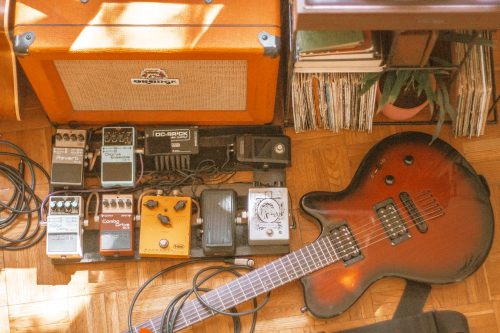
A higher pickup sends strong signals to the amp
A higher output pickup sends a strong signal of your strings vibrating to the amplifier than a lower pickup would.
Higher output pickups will create an overdrive or distortion type of sound effect when you are playing.
6 Ways To Increase Pickup Output
Here are a few ways to increase your pickup output without replacing them.
1. Replace your old strings

This may seem silly, but checking the strings on your guitar may make a huge difference. If your strings are outdated and old, they will not vibrate properly. The better your strings are vibrating, the better your pickups will sound.
This may seem like an obvious thing to point out. However, since strings often go out gradually over time, it can be easy not to notice the gradual loss of their performance.
I can’t count how many times I have changed my strings and felt like I was playing a brand-new guitar, so this alone can fix the issue. If you decide to change the strings, consider going to a lighter gauge (more info below).
2. Use lighter string gauge
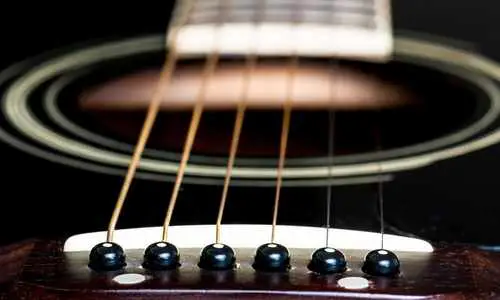
Using a lighter string gauge is also a big help to increase your pickup output. Lighter strings will vibrate more quickly. The increased vibration from the smaller gauged strings will add to the output of your pickups.
Also Read: Heavy Vs Light Guitar Strings: Sound, Playability & Tuning
3. Raise the pickups
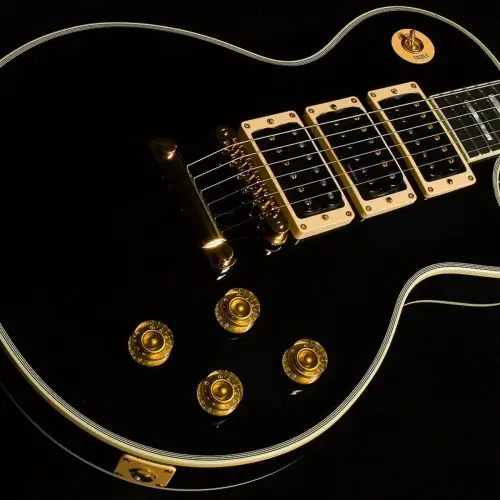
Raising your pickup height is an excellent way to increase your pickup output. The closer the pickup is to the vibrating strings you have, the more vibration your pickups will receive.
Your pickups have a magnetic field that captures the vibration of the strings. Your strings need to be within a close enough range to the pickup to pick up the signal adequately.
The closer your pickups are to the stings, the more pickup output you will get. This is the same as singing into a microphone. The closer your mouth is to it, the more volume will be picked up.
4. Get a boost pedal
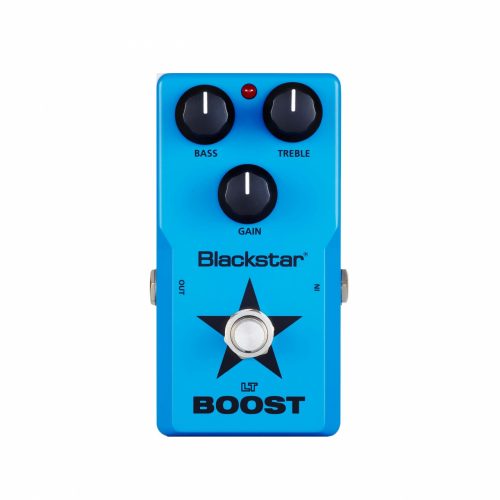
Boost pedals are also a great way to increase pickup output. They work by taking the lower signals from the string vibration your guitar pickups are receiving and then boosting that signal as it is sent to your amplifier. The number of times the signal can be boosted is referred to as the gain.
In addition to increasing the output, it is a good idea to have a boost pedal on hand to help with extra volume when needed. Be it a guitar solo or simply playing a song that may be slightly heavier than other material you usually play. A boost pedal is a huge help in this regard.
5. Increase the gain
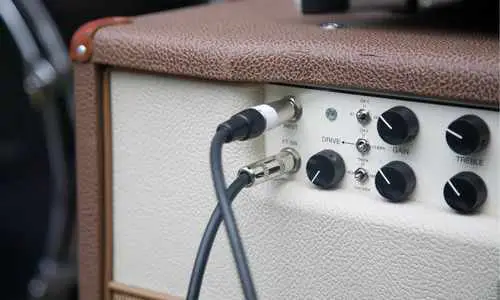
Gain is the number of times a signal is sent from the vibration of your guitar strings, then gets received by your guitar pickups, then transferred to your amplifier.
If you adjust the gain on your amplifier, you will notice the higher the gain, the stronger the pickup becomes.
It can be a balancing act to find the right amount to boost the gain to get it where you want it. Feel free to experiment with this process to see what kind of sound you get.
To do so, turn the volume all the way up on your guitar. From there, put the gain on your amplifier to medium. Start playing the guitar and gradually lower the guitar’s volume.
Also Read: Gain Vs. Distortion Vs. Overdrive: Tone Difference & Usage
6. Place a metal plate under the bridge pickup
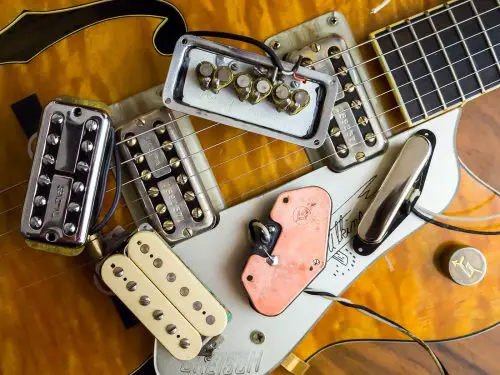
Your pickups work on an electromagnetic field to drive the signal from your strings to the pickups, sending it to the amplifier. A metal plate beneath the bridge pickup will boost the magnetic field that your pickups are working off.
Also Read: Best Pickup Height: Does High Pickup Cause Buzz, Hum Or Noise?
High Output Vs. Low Output Pickups
Please keep in mind that when reviewing this chart, this includes general rules and guidelines. There may always be exceptions.
| High Output Pickups | Low Output Pickups | |
| What is it? | Picks up stronger signals from string vibration to amplify. | Picks up weaker signals from string vibration to amplify. |
| How to achieve? |
|
|
| Cost | Higher ($89.00 to $258.00) | Lower ($79.00 to $219.00) |
| Sound Characteristic | Heavy | Melodic |
| Music Type | Hard Rock and Metal | Jazz, Blues, Lighter Rock |
What Is It: High Output Vs. Low Output Pickups
High-output pickups means that your pickups pick up more signal from the vibration of your guitar strings than if you had low-output pickups.
High-output pickups are typically sought out by guitar players interested in playing loud hard rock or heavy metal music.
For a better understanding of how a high output pickup sounds over a lower output pickup, please refer to the section of this article that links to samples you can listen to.
How To Achieve: High Output Vs. Low Output Pickups
High outputs generally have more coils wound around the pickups to increase their magnetic field. Batteries often power active pickups for an additional electrical boost.
Lower-output pickups usually will have less wire wound around the pickups producing less of a magnetic field to pick up the vibration of your strings. They often do not have additional battery power in them either.
Cost: High Output Vs Low Output Pickups
High-output pickups can run anywhere from $89.00 to $258.00. This will depend on several factors, such as the brand name and the pickups’ quality.
High-output pickups usually will have a higher cost because they have more electrical components to increase the magnetic field around them, such as more wire. The wire is wound more tightly and more frequently around the active pickups.
Low-output -pickups can run anywhere from $79.00 to $219.00. This will also depend on different factors, such as the brand name and the quality of the pickups.
Lower-output pickups are less costly as they have fewer internal components in them. Just as with any other electrical components, they can vary in cost based on the brand name and the quality they are constructed with.
Sound Characteristic: High Output Vs. Low Output Pickups
Lower-output pickups have more of their tone coming through the wood. A lower-output pickup can have a clean-sounding tone (they allow more of the tone from the guitar’s wood to go through) and sound better at lower volumes.
Higher-output pickups will sound dead and dull at lower volumes but will sound great at higher volumes and for more hard, crunchier tones that come with a style of music similar to rock or heavy metal.
This is very subjective from player to player. However, generally speaking, higher output pickups create more gain. They are also less bright and clear and are suitable for hard or heavy-sounding tones that are common with rock and heavy metal. They focus on mid-tones to mid-level tones. For a sample of what high-output pickups can sound like, please check out the link below:
Lower-output pickups allow for a wider frequency of tone ranges. They are less dense in the mid to low-range tones and clearer in the upper and middle-range tones.
These pickups are suitable for jazz, blues, and more of a mid-light to moderately light-rock sounding tone. For a sample of what a lower-output pickup would sound like, please visit the link below:
As with everything else in art and guitar playing, there are always exceptions to what you may be trying to accomplish and the tone you are going for.
First, figure out which type of tone and effect you like the most for the music you enjoy playing. Then, I suggest experimenting with different guitars with different pickups to see which works best for you.
Suitable Music Genre: High Output Vs. Low Output Pickups
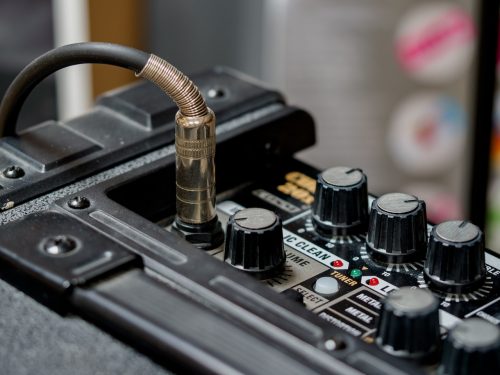
High output pickups are better for rock and metal music
High-output pickups are best suited for heavier rock music and metal. The speed, definition, tightness volume, and guitar solos that come with this style of music match best with these styles since they both rely so much on these characteristics.
On the other hand, low-output pickups create a broader range of tone and sustain. These work well with genres such as blues, country, and lighter rock guitar players.
Are High Output Pickups Better?
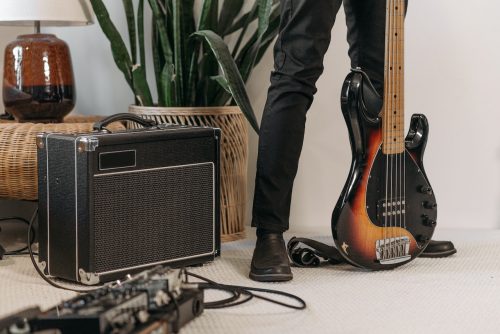
If you are playing hard rock music, high output pickups are better.
High-output pickups are better when playing hard music, such as hard rock or heavy metal. They are better if you plan on playing many guitar solos and such.
Lower pickups are better if you are attempting to essentially lay blues and country type of music or a lighter rock style of music.
It also depends on the type of guitar you have and what it was designed to do. If you have a blues guitar, stick with the lower output pickups (as it will give you the better sound you are looking for. In this case, low-output pickups are the better option.
Conversely, if you have a guitar commonly used by many metal players, you will want to stick with a higher-output guitar.
FAQs
Does Pickup Height Affect Output?
Pickup height will affect the output of your pickups. Your pickup works by simply picking up the vibration of your strings and sending the signal through its electrical components to your amplifier.
The closer the strings are, the louder the sound and the more intense your output is. The less distance between the strings and the pickups, the more intense the signal will be from the strings vibrating to the pickups themselves.
Are Pickups Louder in Series or Parallel?
Pickups are louder when they are wired in a parallel wiring series. These pickups are essentially set up with their own wiring capacity and diagram.
Pickups wired in a series wiring capacity are better for attempting to pick up more sustain from your playing. The series wiring diagram is the less popular of the two.
Please refer to the graphic below for more information on the differences between series and parallel wiring. The parallel wiring is the loudest of the two as they are wired separately.
What is Considered a Hot Guitar Pickup?
A hot guitar pickup is another term for a high-output pickup. It is a slang term. If you hear another guitar player say, “It has hot pickups, ” they mean that the guitar they are playing has high-output pickups.
Conclusion
In conclusion, this article covered a lot of information regarding high-output pickups, like what determines pickup output, how to increase pickup output, and what precisely a higher-output pickup does. We also compared high-output and low-output pickups regarding what each is best for.
We also included additional links so that you could hear samples of both low-output and high-output pickups so that you could judge how it sounds for what you want to play. Both are excellent options, depending on what sound you are going for.
We also reviewed some frequently asked questions, such as whether the height of the pickups affects output, whether pickups are louder in series or parallel, and what is considered a hot guitar pickup.
Please also remember that there is no right or wrong answer here per s e. There are many ways to experiment with the output levels of your pickups to get just the sound you are looking for. I suggest experimenting with all of them and having fun with them.






